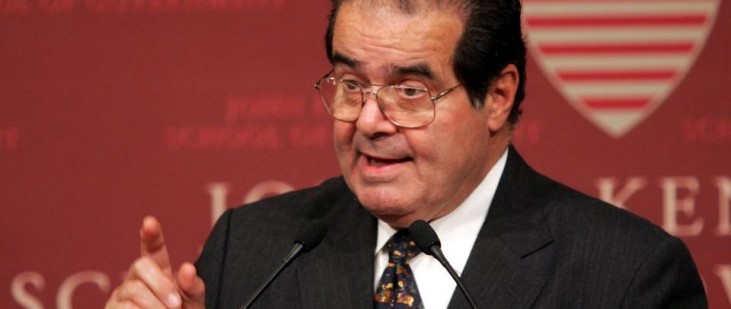On Saturday, February 13, Supreme Court Associate Justice Antonin Scalia passed away. CLBB Faculty Member Judge Nancy Gertner (ret.) reflects on his legacy.
By Nancy Gertner | The Boston Globe | February 14, 2016
I did not know Justice Antonin Scalia. Following the announcement of his death, I could not help but be struck by the accounts of his warmth, his friendships (notably with Justice Ruth Bader Ginsberg, with whom he regularly disagreed on the Supreme Court), his deep religious commitment, his infectious sense of humor.
I knew him through his opinions, books, and speeches. Even though I disagreed with him much of the time, one thing is clear: His legal positions could not be ignored — not by lawyers, scholars, judges, nor the public. I had to take them seriously in my own judicial decisions and in my writing. And the need to deal with his arguments shifted the debate, even the outcomes.
Scalia was a constitutional originalist — a position that emphasized the plain language of the Constitution’s text, and fixed the meaning of the Constitution to the time at which it was written. That was the only approach Scalia believed would prevent judges from implementing their own political philosophies.
The problem with that stance, however, is the Constitution’s text is far from “plain” or clear. Words don’t interpret themselves; they require interpretation, and the Constitution even more so than most texts. Historical accounts of the ratification suggest that the Constitution was intentionally vague; its signatories had fundamentally different ideas of what it meant. There was often no single original meaning, but a plethora of multiple meanings depending on reader and writer.
Worse yet, the Constitution’s drafters could not have envisioned the issues with which the Court has been confronted today, as an Asian-American student raised to Justice Scalia at a recent forum. She noted women, for one, were not represented at all. They could not vote, serve on juries, or hold office. Blacks were not even citizens; in most states they were chattel. Only white men with property could participate in the political process. And the student added, “My people, Asians, were not allowed into the country at all. Why should I accept a Constitution whose meaning was frozen at that time?” It was a fair question to which Justice Scalia did not have an answer.
It was originalism, he insisted, not his politics that led him to support every single effort to restrict Roe v. Wade. It led him to be anti-affirmative action, although a question at a recent oral argument suggested a more troubling perspective: “Black students,” he said, would do better going to a “less-advanced school, a slower-track school, where they do well.” His views of the Constitution’s separation of church and state have been widely denounced by scholars as not at all consistent with the Constitution’s intent. He argued that there is “no place” in our constitutional tradition for the principle that the government ought to be neutral with respect to religion. And, more recently, he rejected constitutional protection for same-sex marriage in a biting dissent.
But his judicial philosophy also aligned him with the Court’s moderates. He was a strong voice on First Amendment protections, holding that the state could not ban the burning of the American flag, or constitutionally forbid children from accessing violent video games. And while hardly a liberal on criminal justice issues, he authored the decision holding that the installation of a GPS tracking device on a vehicle without a warrant constituted an unlawful search, another that struck down a portion of the federal Armed Career Criminal Act, a three-strikes type law which required a fifteen-year mandatory minimum on proof of certain prior convictions.
Originalism, however, does not explain why Justice Scalia joined the majority in Bush v. Gore, when the Court’s ruling handed a victory to George Bush, a decision which he described as “not even close.” Nor does it fully explain his Second Amendment decision giving constitutional protection to the right to of a citizen to possess a gun unconnected with service in a militia, at odds with decades of precedent.
Even if not always consistent, one thing was clear: Scalia was always certain, writing as if his decision did not admit of another side. He called other justices’ arguments “bizarre” or “grotesque,” even “incoherent.” Vitriolic language and sarcasm works as well to get attention in a judicial decision as it does in presidential debates.
With his death, the Court is divided four to four on major issues. Cases heard with Justice Scalia but not yet decided will now have to be determined by a split court, as will the remaining decisions on the Court’s docket — affirmative action, abortion, the status of public sector unions, religious freedom under Obamacare versus a woman’s access to contraception. And if the Court can’t come to a decision, the lower court decision necessarily stands. With two justices in their late 70s, another 82, the next President stands to fundamentally reshape the Court.
Read the full article, originally published in The Boston Globe.



